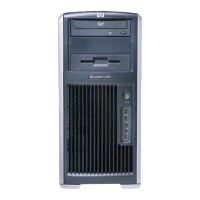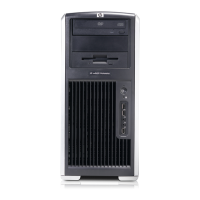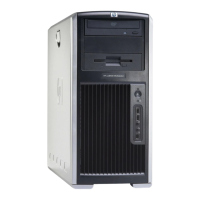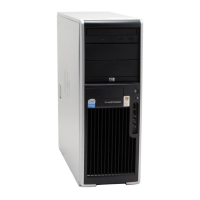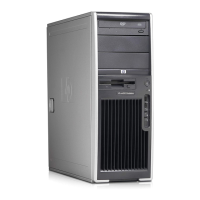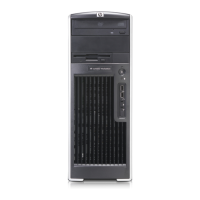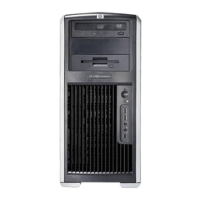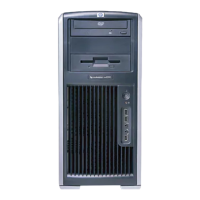
Do you have a question about the HP Xw8200 - Workstation - 1 GB RAM and is the answer not in the manual?
| Category | Desktop |
|---|---|
| Model | Xw8200 |
| Type | Workstation |
| RAM | 1 GB |
| Processor | Intel Xeon |
| Chipset | Intel E7525 |
| Storage | Varies by configuration |
| Graphics Controller | NVIDIA Quadro FX 1300 |
| Audio Output | Integrated audio |
| Networking | Gigabit Ethernet |
| Optical Drive | DVD-ROM |
| Operating System | Windows XP Professional |
| Expansion Slots | 2 PCI |
| Ports | USB, serial, parallel, PS/2, audio |
Overview of the workstation's physical components and their identification.
Details the physical dimensions and weight of the workstation.
Explains the power supply outputs and system cooling mechanisms.
Specifies operating conditions like temperature, humidity, and altitude.
Details the power limits for various PCI and PCI Express slots.
Information on the workstation's energy efficiency compliance.
Explanation of Intel's CPU technology for enhanced multitasking.
Guides on installing the OS, drivers, and HP software.
Procedures for restoring the system to its original state.
Recommendations for backing up and securing system software.
Instructions for using the BIOS setup utility to configure system settings.
Overview of tools for managing workstations in a networked environment.
Essential safety precautions and procedures before servicing hardware.
Steps to prepare the workstation before component removal.
Identifies key connectors and components on the system board.
Detailed instructions for removing and installing hardware parts.
Accessing HP's online technical support and resources.
A systematic guide to identify and resolve common issues.
Explains the meaning of front panel LED status indicators.
Guide to using the built-in diagnostic tool for hardware testing.
Lists and explains error codes and diagnostic light patterns.
Provides step-by-step solutions for various system problems.
Rules and best practices for installing and configuring SCSI devices.
Instructions on using the SCSI configuration utility for managing devices.
Details on Self-Monitoring, Analysis, and Reporting Technology for drives.
Explains SCSI ID configuration using jumpers.
Best practices for installing and operating SATA devices.
Flowchart illustrating the sequence for booting from different storage devices.
Information on supported RAID configurations for SATA drives.
Explains jumper settings for configuring Ultra ATA drives.
Guidelines for selecting and using Ultra ATA cables for optimal performance.
Rules for connecting drives to ATA controller channels.
Categorizes ATA/ATAPI drives based on bandwidth requirements.
Rules for optimal drive connection sequence based on device class.
A tool to plan drive installation sequences for optimum performance.
Pinout details for Keyboard, Mouse, Ethernet, Parallel, Serial, and USB ports.
Pinout details for Microphone, Headphone, Line-in/out Audio, and IEEE 1394 ports.
Pinout details for Ultra SCSI, SATA, VGA, and DVI connectors.
Pinouts for IDE drive cable, main power, auxiliary power, and CPU power connectors.
A table mapping system board designators to components and silkscreens.
Guidelines for selecting and using appropriate power cords for the workstation.
Safety rules to follow before cleaning workstation components.
Recommendations for ensuring proper ventilation and preventing overheating.
Instructions for cleaning the workstation case, keyboard, monitor, and mouse.
Overview of setup and power-on password functionalities.
Procedure to clear system passwords using a jumper.
Methods for clearing CMOS settings to restore factory defaults.
A decision tree to diagnose general system issues.
Step-by-step guide for diagnosing and resolving power-related problems.
Flowcharts for diagnosing and fixing display issues.
Lists and explains common POST error messages and diagnostic codes.
Troubleshooting flowcharts for problems with operating system startup.
Steps to diagnose and resolve issues with specific hardware components.
